面试官:如何实现幂等性校验?
Posted Java中文社群
tags:
篇首语:本文由小常识网(cha138.com)小编为大家整理,主要介绍了面试官:如何实现幂等性校验?相关的知识,希望对你有一定的参考价值。
作者 | wangzaiplus
来源 | https://www.jianshu.com/p/6189275403ed
一、概念
幂等性, 通俗的说就是一个接口, 多次发起同一个请求, 必须保证操作只能执行一次比如:
订单接口, 不能多次创建订单
支付接口, 重复支付同一笔订单只能扣一次钱
支付宝回调接口, 可能会多次回调, 必须处理重复回调
普通表单提交接口, 因为网络超时等原因多次点击提交, 只能成功一次 等等
二、常见解决方案
唯一索引 -- 防止新增脏数据
token机制 -- 防止页面重复提交
悲观锁 -- 获取数据的时候加锁(锁表或锁行)
乐观锁 -- 基于版本号version实现, 在更新数据那一刻校验数据
分布式锁 -- redis(jedis、redisson)或zookeeper实现
状态机 -- 状态变更, 更新数据时判断状态
三、本文实现
本文采用第2种方式实现, 即通过redis + token机制实现接口幂等性校验
四、实现思路
为需要保证幂等性的每一次请求创建一个唯一标识 token, 先获取 token, 并将此 token存入redis, 请求接口时, 将此 token放到header或者作为请求参数请求接口, 后端接口判断redis中是否存在此 token:
如果存在, 正常处理业务逻辑, 并从redis中删除此
token, 那么, 如果是重复请求, 由于token已被删除, 则不能通过校验, 返回请勿重复操作提示如果不存在, 说明参数不合法或者是重复请求, 返回提示即可
五、项目简介
springboot
redis
@ApiIdempotent注解 + 拦截器对请求进行拦截@ControllerAdvice全局异常处理
压测工具: jmeter
说明:
本文重点介绍幂等性核心实现, 关于springboot如何集成redis、ServerResponse、ResponseCode等细枝末节不在本文讨论范围之内, 有兴趣的小伙伴可以查看作者的Github项目: https://github.com/wangzaiplus/springboot/tree/wxw
六、代码实现
pom
<!-- Redis-Jedis -->
<dependency>
<groupId>redis.clients</groupId>
<artifactId>jedis</artifactId>
<version>2.9.0</version>
</dependency>
<!--lombok 本文用到@Slf4j注解, 也可不引用, 自定义log即可-->
<dependency>
<groupId>org.projectlombok</groupId>
<artifactId>lombok</artifactId>
<version>1.16.10</version>
</dependency>
JedisUtil
package com.wangzaiplus.test.util;
import lombok.extern.slf4j.Slf4j;
import org.springframework.beans.factory.annotation.Autowired;
import org.springframework.stereotype.Component;
import redis.clients.jedis.Jedis;
import redis.clients.jedis.JedisPool;
@Component
@Slf4j
public class JedisUtil {
@Autowired
private JedisPool jedisPool;
private Jedis getJedis() {
return jedisPool.getResource();
}
/**
* 设值
*
* @param key
* @param value
* @return
*/
public String set(String key, String value) {
Jedis jedis = null;
try {
jedis = getJedis();
return jedis.set(key, value);
} catch (Exception e) {
log.error("set key:{} value:{} error", key, value, e);
return null;
} finally {
close(jedis);
}
}
/**
* 设值
*
* @param key
* @param value
* @param expireTime 过期时间, 单位: s
* @return
*/
public String set(String key, String value, int expireTime) {
Jedis jedis = null;
try {
jedis = getJedis();
return jedis.setex(key, expireTime, value);
} catch (Exception e) {
log.error("set key:{} value:{} expireTime:{} error", key, value, expireTime, e);
return null;
} finally {
close(jedis);
}
}
/**
* 取值
*
* @param key
* @return
*/
public String get(String key) {
Jedis jedis = null;
try {
jedis = getJedis();
return jedis.get(key);
} catch (Exception e) {
log.error("get key:{} error", key, e);
return null;
} finally {
close(jedis);
}
}
/**
* 删除key
*
* @param key
* @return
*/
public Long del(String key) {
Jedis jedis = null;
try {
jedis = getJedis();
return jedis.del(key.getBytes());
} catch (Exception e) {
log.error("del key:{} error", key, e);
return null;
} finally {
close(jedis);
}
}
/**
* 判断key是否存在
*
* @param key
* @return
*/
public Boolean exists(String key) {
Jedis jedis = null;
try {
jedis = getJedis();
return jedis.exists(key.getBytes());
} catch (Exception e) {
log.error("exists key:{} error", key, e);
return null;
} finally {
close(jedis);
}
}
/**
* 设值key过期时间
*
* @param key
* @param expireTime 过期时间, 单位: s
* @return
*/
public Long expire(String key, int expireTime) {
Jedis jedis = null;
try {
jedis = getJedis();
return jedis.expire(key.getBytes(), expireTime);
} catch (Exception e) {
log.error("expire key:{} error", key, e);
return null;
} finally {
close(jedis);
}
}
/**
* 获取剩余时间
*
* @param key
* @return
*/
public Long ttl(String key) {
Jedis jedis = null;
try {
jedis = getJedis();
return jedis.ttl(key);
} catch (Exception e) {
log.error("ttl key:{} error", key, e);
return null;
} finally {
close(jedis);
}
}
private void close(Jedis jedis) {
if (null != jedis) {
jedis.close();
}
}
}
自定义注解 @ApiIdempotent
package com.wangzaiplus.test.annotation;
import java.lang.annotation.ElementType;
import java.lang.annotation.Retention;
import java.lang.annotation.RetentionPolicy;
import java.lang.annotation.Target;
/**
* 在需要保证 接口幂等性 的Controller的方法上使用此注解
*/
@Target({ElementType.METHOD})
@Retention(RetentionPolicy.RUNTIME)
public @interface ApiIdempotent {
}
ApiIdempotentInterceptor拦截器
package com.wangzaiplus.test.interceptor;
import com.wangzaiplus.test.annotation.ApiIdempotent;
import com.wangzaiplus.test.service.TokenService;
import org.springframework.beans.factory.annotation.Autowired;
import org.springframework.web.method.HandlerMethod;
import org.springframework.web.servlet.HandlerInterceptor;
import org.springframework.web.servlet.ModelAndView;
import javax.servlet.http.HttpServletRequest;
import javax.servlet.http.HttpServletResponse;
import java.lang.reflect.Method;
/**
* 接口幂等性拦截器
*/
public class ApiIdempotentInterceptor implements HandlerInterceptor {
@Autowired
private TokenService tokenService;
@Override
public boolean preHandle(HttpServletRequest request, HttpServletResponse response, Object handler) {
if (!(handler instanceof HandlerMethod)) {
return true;
}
HandlerMethod handlerMethod = (HandlerMethod) handler;
Method method = handlerMethod.getMethod();
ApiIdempotent methodAnnotation = method.getAnnotation(ApiIdempotent.class);
if (methodAnnotation != null) {
check(request);// 幂等性校验, 校验通过则放行, 校验失败则抛出异常, 并通过统一异常处理返回友好提示
}
return true;
}
private void check(HttpServletRequest request) {
tokenService.checkToken(request);
}
@Override
public void postHandle(HttpServletRequest httpServletRequest, HttpServletResponse httpServletResponse, Object o, ModelAndView modelAndView) throws Exception {
}
@Override
public void afterCompletion(HttpServletRequest httpServletRequest, HttpServletResponse httpServletResponse, Object o, Exception e) throws Exception {
}
}
TokenServiceImpl
package com.wangzaiplus.test.service.impl;
import com.wangzaiplus.test.common.Constant;
import com.wangzaiplus.test.common.ResponseCode;
import com.wangzaiplus.test.common.ServerResponse;
import com.wangzaiplus.test.exception.ServiceException;
import com.wangzaiplus.test.service.TokenService;
import com.wangzaiplus.test.util.JedisUtil;
import com.wangzaiplus.test.util.RandomUtil;
import lombok.extern.slf4j.Slf4j;
import org.apache.commons.lang3.StringUtils;
import org.apache.commons.lang3.text.StrBuilder;
import org.springframework.beans.factory.annotation.Autowired;
import org.springframework.stereotype.Service;
import javax.servlet.http.HttpServletRequest;
@Service
public class TokenServiceImpl implements TokenService {
private static final String TOKEN_NAME = "token";
@Autowired
private JedisUtil jedisUtil;
@Override
public ServerResponse createToken() {
String str = RandomUtil.UUID32();
StrBuilder token = new StrBuilder();
token.append(Constant.Redis.TOKEN_PREFIX).append(str);
jedisUtil.set(token.toString(), token.toString(), Constant.Redis.EXPIRE_TIME_MINUTE);
return ServerResponse.success(token.toString());
}
@Override
public void checkToken(HttpServletRequest request) {
String token = request.getHeader(TOKEN_NAME);
if (StringUtils.isBlank(token)) {// header中不存在token
token = request.getParameter(TOKEN_NAME);
if (StringUtils.isBlank(token)) {// parameter中也不存在token
throw new ServiceException(ResponseCode.ILLEGAL_ARGUMENT.getMsg());
}
}
if (!jedisUtil.exists(token)) {
throw new ServiceException(ResponseCode.REPETITIVE_OPERATION.getMsg());
}
Long del = jedisUtil.del(token);
if (del <= 0) {
throw new ServiceException(ResponseCode.REPETITIVE_OPERATION.getMsg());
}
}
}
TestApplication
package com.wangzaiplus.test;
import com.wangzaiplus.test.interceptor.ApiIdempotentInterceptor;
import org.mybatis.spring.annotation.MapperScan;
import org.springframework.boot.SpringApplication;
import org.springframework.boot.autoconfigure.SpringBootApplication;
import org.springframework.context.annotation.Bean;
import org.springframework.web.cors.CorsConfiguration;
import org.springframework.web.cors.UrlBasedCorsConfigurationSource;
import org.springframework.web.filter.CorsFilter;
import org.springframework.web.servlet.config.annotation.InterceptorRegistry;
import org.springframework.web.servlet.config.annotation.WebMvcConfigurerAdapter;
@SpringBootApplication
@MapperScan("com.wangzaiplus.test.mapper")
public class TestApplication extends WebMvcConfigurerAdapter {
public static void main(String[] args) {
SpringApplication.run(TestApplication.class, args);
}
/**
* 跨域
* @return
*/
@Bean
public CorsFilter corsFilter() {
final UrlBasedCorsConfigurationSource urlBasedCorsConfigurationSource = new UrlBasedCorsConfigurationSource();
final CorsConfiguration corsConfiguration = new CorsConfiguration();
corsConfiguration.setAllowCredentials(true);
corsConfiguration.addAllowedOrigin("*");
corsConfiguration.addAllowedHeader("*");
corsConfiguration.addAllowedMethod("*");
urlBasedCorsConfigurationSource.registerCorsConfiguration("/**", corsConfiguration);
return new CorsFilter(urlBasedCorsConfigurationSource);
}
@Override
public void addInterceptors(InterceptorRegistry registry) {
// 接口幂等性拦截器
registry.addInterceptor(apiIdempotentInterceptor());
super.addInterceptors(registry);
}
@Bean
public ApiIdempotentInterceptor apiIdempotentInterceptor() {
return new ApiIdempotentInterceptor();
}
}
OK, 目前为止, 校验代码准备就绪, 接下来测试验证
七、测试验证
获取 token的控制器 TokenController
package com.wangzaiplus.test.controller;
import com.wangzaiplus.test.common.ServerResponse;
import com.wangzaiplus.test.service.TokenService;
import org.springframework.beans.factory.annotation.Autowired;
import org.springframework.web.bind.annotation.GetMapping;
import org.springframework.web.bind.annotation.RequestMapping;
import org.springframework.web.bind.annotation.RestController;
@RestController
@RequestMapping("/token")
public class TokenController {
@Autowired
private TokenService tokenService;
@GetMapping
public ServerResponse token() {
return tokenService.createToken();
}
}
TestController, 注意 @ApiIdempotent注解, 在需要幂等性校验的方法上声明此注解即可, 不需要校验的无影响
package com.wangzaiplus.test.controller;
import com.wangzaiplus.test.annotation.ApiIdempotent;
import com.wangzaiplus.test.common.ServerResponse;
import com.wangzaiplus.test.service.TestService;
import lombok.extern.slf4j.Slf4j;
import org.springframework.beans.factory.annotation.Autowired;
import org.springframework.web.bind.annotation.PostMapping;
import org.springframework.web.bind.annotation.RequestMapping;
import org.springframework.web.bind.annotation.RestController;
@RestController
@RequestMapping("/test")
@Slf4j
public class TestController {
@Autowired
private TestService testService;
@ApiIdempotent
@PostMapping("testIdempotence")
public ServerResponse testIdempotence() {
return testService.testIdempotence();
}
}
获取 token
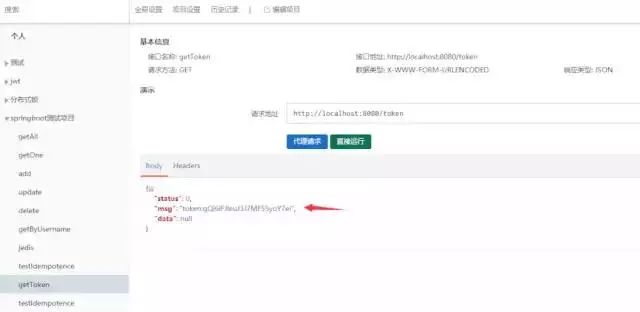
查看redis
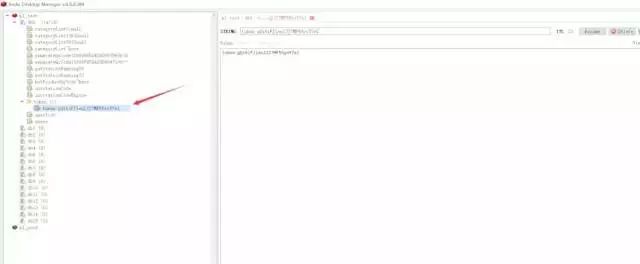
测试接口安全性: 利用jmeter测试工具模拟50个并发请求, 将上一步获取到的token作为参数

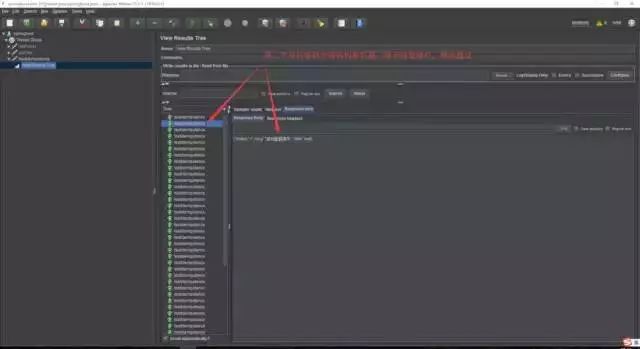
header或参数均不传token, 或者token值为空, 或者token值乱填, 均无法通过校验, 如token值为"abcd"
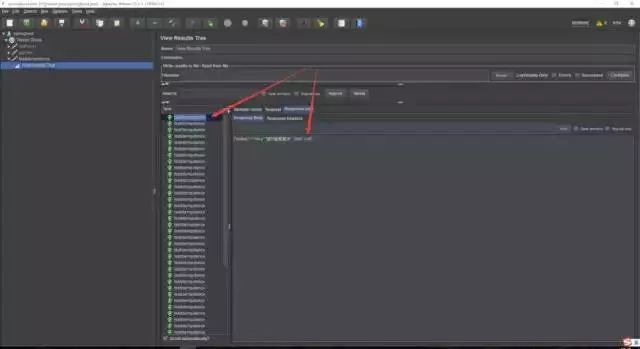
八、注意点(非常重要)
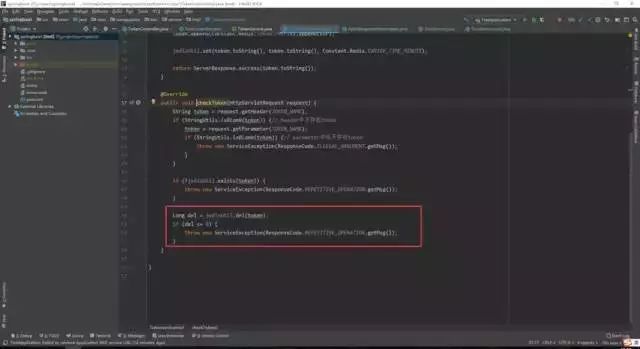
上图中, 不能单纯的直接删除token而不校验是否删除成功, 会出现并发安全性问题, 因为, 有可能多个线程同时走到第46行, 此时token还未被删除, 所以继续往下执行, 如果不校验 jedisUtil.del(token)的删除结果而直接放行, 那么还是会出现重复提交问题, 即使实际上只有一次真正的删除操作, 下面重现一下
稍微修改一下代码:
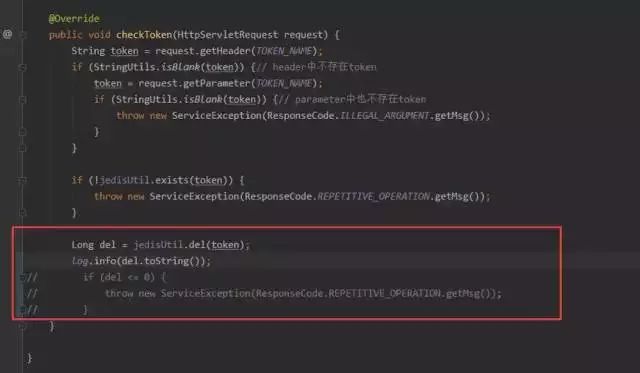
再次请求
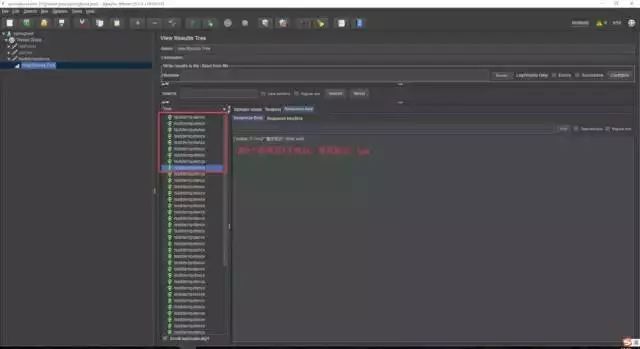
再看看控制台
虽然只有一个真正删除掉token, 但由于没有对删除结果进行校验, 所以还是有并发问题, 因此, 必须校验
九、总结
其实思路很简单, 就是每次请求保证唯一性, 从而保证幂等性, 通过拦截器+注解, 就不用每次请求都写重复代码, 其实也可以利用spring aop实现。
【END】
以上是关于面试官:如何实现幂等性校验?的主要内容,如果未能解决你的问题,请参考以下文章